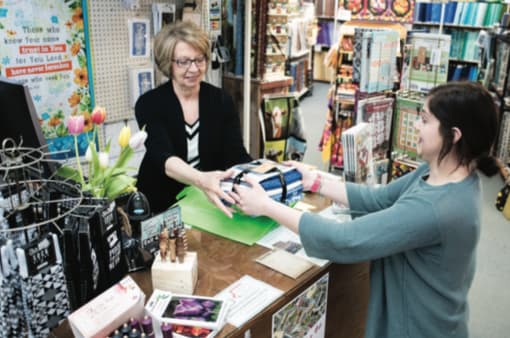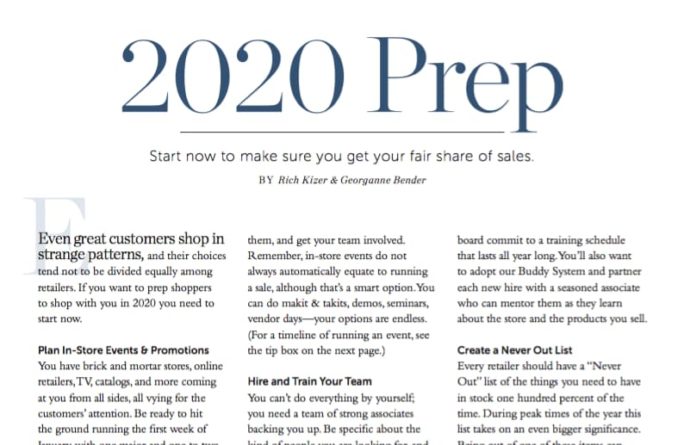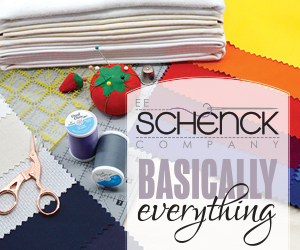Start now to make sure you get your fair share of sales.
Even great customers shop in strange patterns, and their choices tend not to be divided equally among retailers. If you want to prep shoppers to shop with you in 2020 you need to start now.
Plan In-Store Events & Promotions
You have brick and mortar stores, online retailers, TV, catalogs, and more coming at you from all sides, all vying for the customers’ attention. Be ready to hit the ground running the first week of January with one major and one to two minor events locked and loaded on your calendar. And then follow through with the same amount of events scheduled for every week of the year. Yes, the entire year.
Plan each event, buy product for them, and get your team involved. Remember, in-store events do not always automatically equate to running a sale, although that’s a smart option. You can do makit & takits, demos, seminars, vendor days—your options are endless. (For a timeline of running an event, see the tip box on the next page.)
 Hire and Train Your Team
Hire and Train Your Team
You can’t do everything by yourself; you need a team of strong associates backing you up. Be specific about the kind of people you are looking for, and be upfront about what is required to do the job. You can teach about product, and how to deliver exemplary customer service, but you can’t teach nice, so start there. Once you have new hires on board commit to a training schedule that lasts all year long. You’ll also want to adopt our Buddy System and partner each new hire with a seasoned associate who can mentor them as they learn about the store and the products you sell.
Create a Never Out List
Every retailer should have a “Never Out” list of the things you need to have in stock one hundred percent of the time. During peak times of the year this list takes on an even bigger significance. Being out of one of these items can literally make or break a sale, and in your case it could be a big one. Your POS system will likely create this list for you, but make sure to do frequent physical counts to make sure your list is correct.
Sell, Sell, SELL Gift Cards
Gift cards are your secret weapon. Notice we said gift CARDS. That’s because a recent study found that retailers who switch from paper gift certificates to plastic gift cards increase gift card sales from 35 percent to 50 percent.
There’s more: 55 percent of gift card recipients require more than one shopping trip to the store to spend the balance of their card—that’s good news for you. Here’s the thing: A gift card or certificate that’s presented in a boring paper sleeve or envelope doesn’t look like much, even if it’s for big bucks. You’ll want to package your gift cards with a look that’s unique to what you sell.
Create a Weekly Bag Stuffer
Bag stuffers are easy-to-create ads you make on your own computer. You can use your most recent email blast, vendor produced POP materials stamped with your store’s information or create a bag stuffer you specifically design to bring customers back to shop with you again. Now, if you merely stuff them into bags you’re wasting paper—and an opportunity. It makes more sense to hand your bag stuffers to customers while explaining what’s on them. Consider it a one-on-one 30 second commercial.
Make Sure Your Return Policy is Competitive
If every one of your competitors accepts returns and exchanges but your policy screams NO! NO! NO! customers will go someplace else to shop. If you
don’t have a return policy here’s a good place to start: “Returns and exchanges gladly accepted within ______ days. Your receipt guarantees it.” You’ll save more sales if you train all your associates to politely offer an exchange or a gift card before offering a refund.
Be Prepared for Markdowns
A markdown strategy for every piece of merchandise that you purchase is a smart idea. You will need to determine which merchandise will be discounted; how much it will be discounted, how it will be signed (numbers work better than percentages), and where it will displayed on the sales floor. Unless you are having a big sale, display clearance merchandise near the back of the store so shoppers have to pass through new product displays to get to it.
You’re tired just reading this, right? Being a retailer means long hours, juggling tasks, and putting out fires. In 2020, make it easier on yourself by setting a solid game plan. If you haven’t already begun, start planning NOW!
Hosting Store Events
Use our step-by-step list to ensure success.
We recommend hosting four major events a year and one to two smaller events a month. The smaller events can be classes, demonstrations, or make-and-takes. Events can be fun and will become easier to manage with time. Hopefully some events will be such a success they turn into an annual endeavor.
- Three to Four Months Before
- Send letters to vendors requesting merchandise for giveaways (many stores incorporate this into their budgets, you’ll never know if you don’t ask). • Ask for in-store help preparing classes and goodie bags.
- Plan your advertising—what outlets will you use and when do you plan on contacting them to promote the event?
- Two Months Before
- Check with sta weekly to make sure everyone is on par with getting their tasks done.
- Follow up with vendors. Check if they have any special needs.
- Put in your catering order.
- One Month Before
- Schedule social media posts promoting event.
- Draw sales floor layout outlining where everything will be day-of.
- If this is invitation only, design your invites.
- Start handing out even fliers to customers at check out. Train your sta on a 30-second pitch promoting the event as they put the ier in the bag.
- Two Weeks Before
- Check with staff to make sure everything is going as planned. If you nd out things aren’t going as you’d think, you still have time to correct them. • Send your invitations.
- One Week Before
- Send press releases around town.
- Prepare a list of in-store specials (prize drawing 7:15, demo #1 at 7:30, etc.) • Talk about your event in your company voicemail.
- Double check refreshment order.
- Make “jar of beans” for guessing game. Not only do attendees love it, but it’s a great way to get names and contact information.
- Start to get your sales floor ready for the event.
- Adjust window displays to go with theme.
- Day Before
- Finalize oor plan.
- Hang all decorations before you leave for the night. • And of course, check your master plan again.
- Day-Of
- Schedule pre-breakfast meeting with staff.
- Give schedule to staff and place by register, cutting areas, etc.
- Greet guests at door and encourage them to sign a guest book, this is another great way to get contact information.
- Take photos.
- After the Event
- Send an anonymous survey to staff to get opinions on how the event went.
- Record sales, customer count, advertising process, number of vendors, and even the weather for the day. Keep this on le to compare to other events.
- Send follow-up press releases of event with images.
- Send personal letters (not emails) to everyone who helped.
Rich Kizer and Georganne Bender are consumer anthropologists, speakers, authors and consultants. Find more great articles from Kizer and Bender here!





